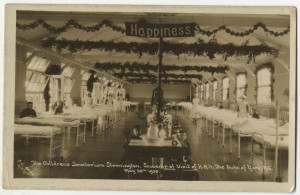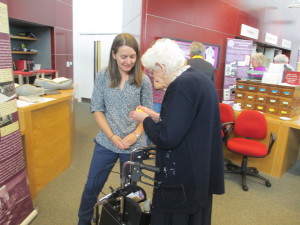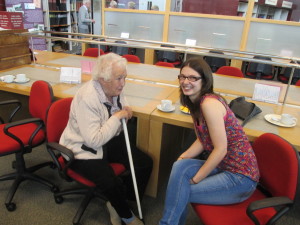As the Stannington Sanatorium Project Assistant my responsibility is to ensure the good preservation and access to the Stannington Sanatorium records. Since early November I have been removing boxes of our patient files from the shelves and repackaging them. This follows a set process. First I begin by opening the file and separating out the core documents from the other contents of the file, and securing them to the inside of the file with an archival quality brass paper clip. The core documents include X-ray records, discharge reports, treatment notes and case notes. These contain a wealth of information about each patient’s treatment and health during their time at the Sanatorium. The non-core documents vary greatly in content, usually (but not always) including temperature charts, a history of illness and medical permissions form completed by parents, reports and letters of their transfer. There are often a number of other documents included, and
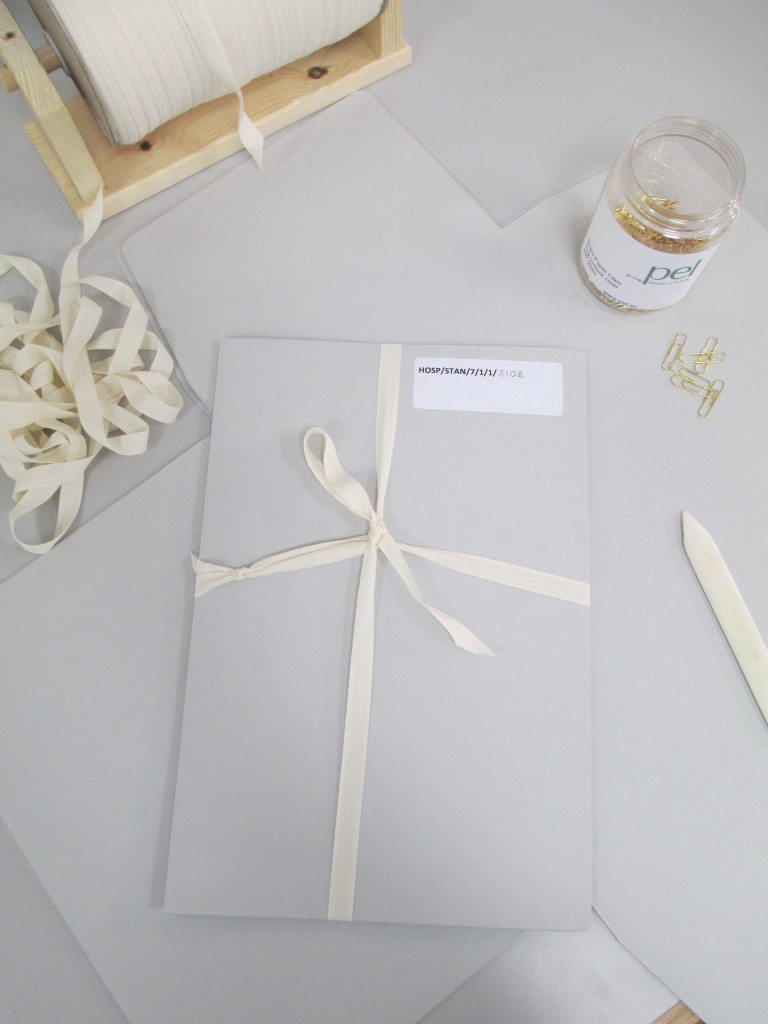
we will look more closely at the contents of the files in a future blog. I also ensure the file itself is in good order for its conservation, that there is no yellowing sticky tape, old paper clips or pins that may corrode.
It is then folded with an archival-grade four-flapped envelope, which we were able to purchase thanks to our Wellcome Trust grant. These are high-quality, acid-free card envelopes; an excellent way to protect the documents from damage and dust ingress. This is then given a printed label with the file’s reference number, and tied together in acid-free archival tape tied with a quick-release knot. Due to the thickness of the files after their repackaging additional boxes are required, and I estimate repackaging will at least double the number of boxes the collection occupies.
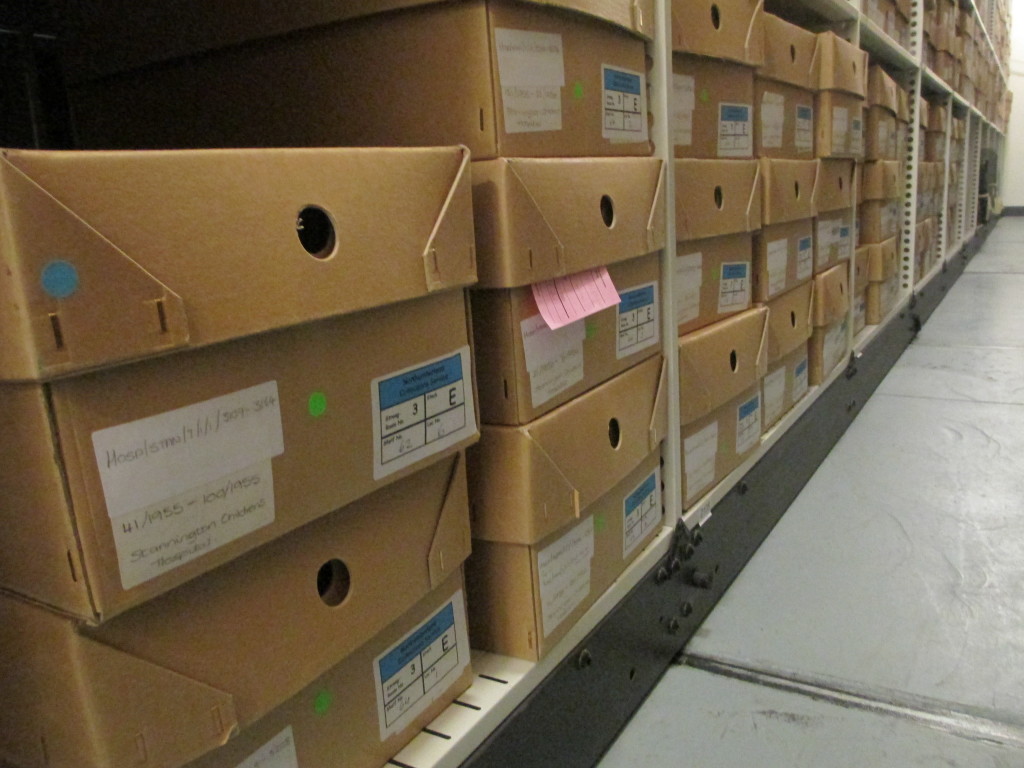
This all has to be given extra space within the Northumberland Archives strongrooms. I have moved the boxes yet to be repackaged to a new temporary location, and am refilling the shelves as the boxes are completed, updating their location references as I go. I have just passed the halfway mark, but there is a lot still to be done!
Once completed however, the records don’t just sit unused. We often have Subject Access Enquiries, usually made by former Stannington patients wishing to see their records, and these are dealt with by our research team. We require authentication and permission to do this, which can take some time. The documents are not only useful for finding out more about individual lives, but for research into tuberculosis in children and the history of its treatment. A number of research institutions have looked at redacted images of the files and radiographs, to learn more about Tuberculosis.
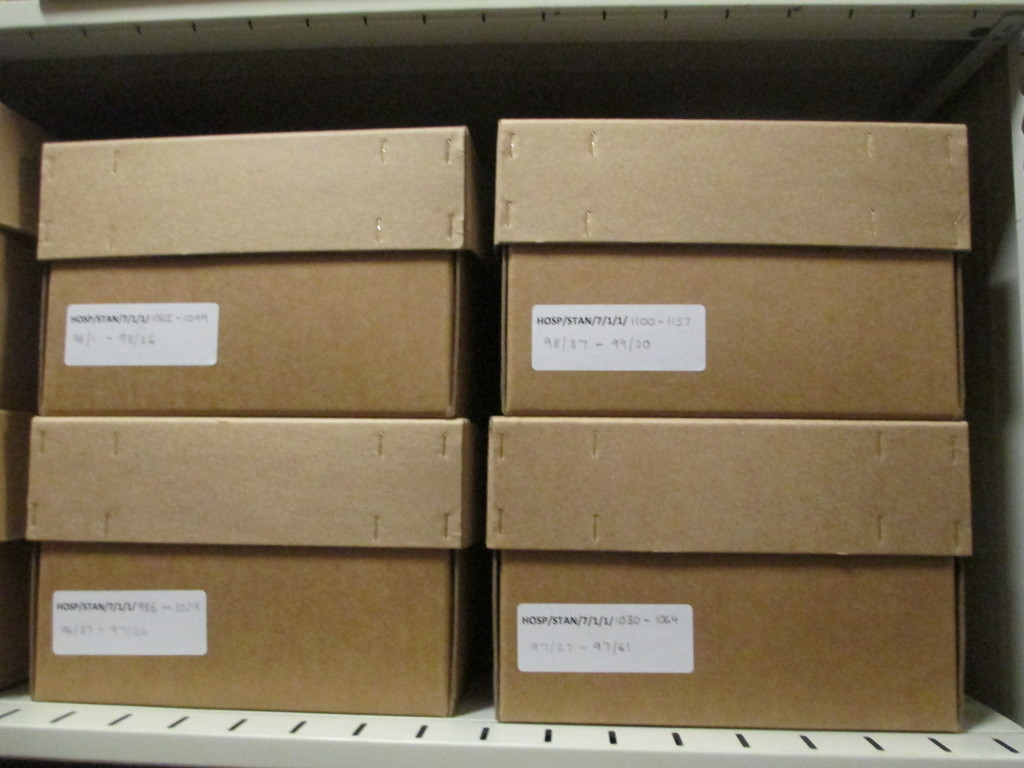
This has to be done with the strictest patient confidentiality, and we will discuss more about the redaction process in future blogs. A former colleague at the Northumberland Archives, Becky Cessford, is looking at the uses of the Stannington Sanatorium collection in the wider fields of archaeology of human remains, history of medicine and archival outreach in her PhD. She will discuss her fascinating project in a blog post for us sometime soon. It is fantastic that the records are being used by former patients and researchers as such a valuable collection should be appreciated. The team last year started to raise the collection’s profile through these blogs, talks, an online exhibition and a touring exhibition, and I hope to be able to carry on some of this in phase two. You can see the online exhibition here, and the touring exhibition will soon be moving from libraries across Northumberland to HM Prison Acklington until late March.

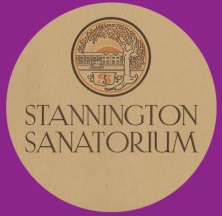
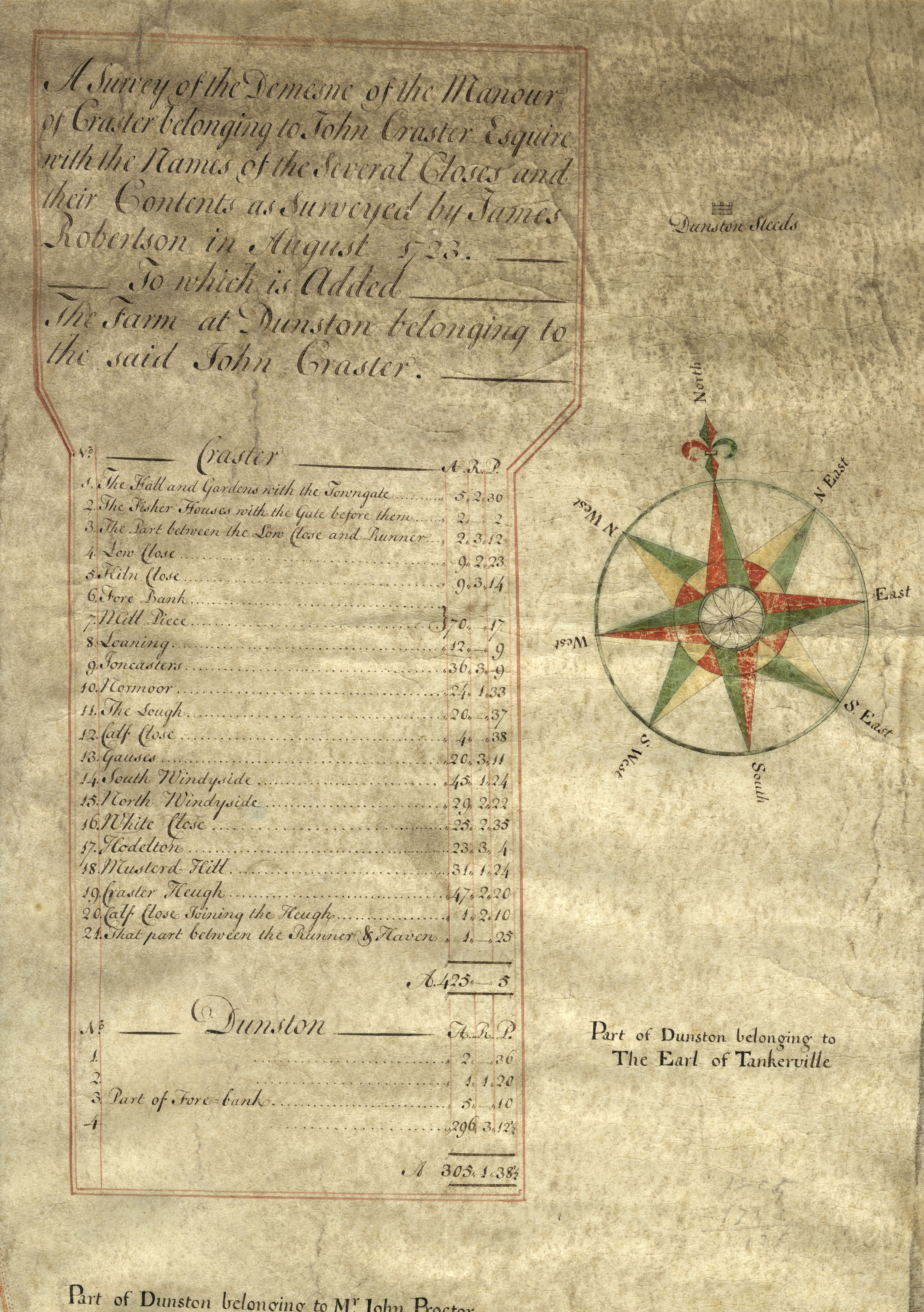
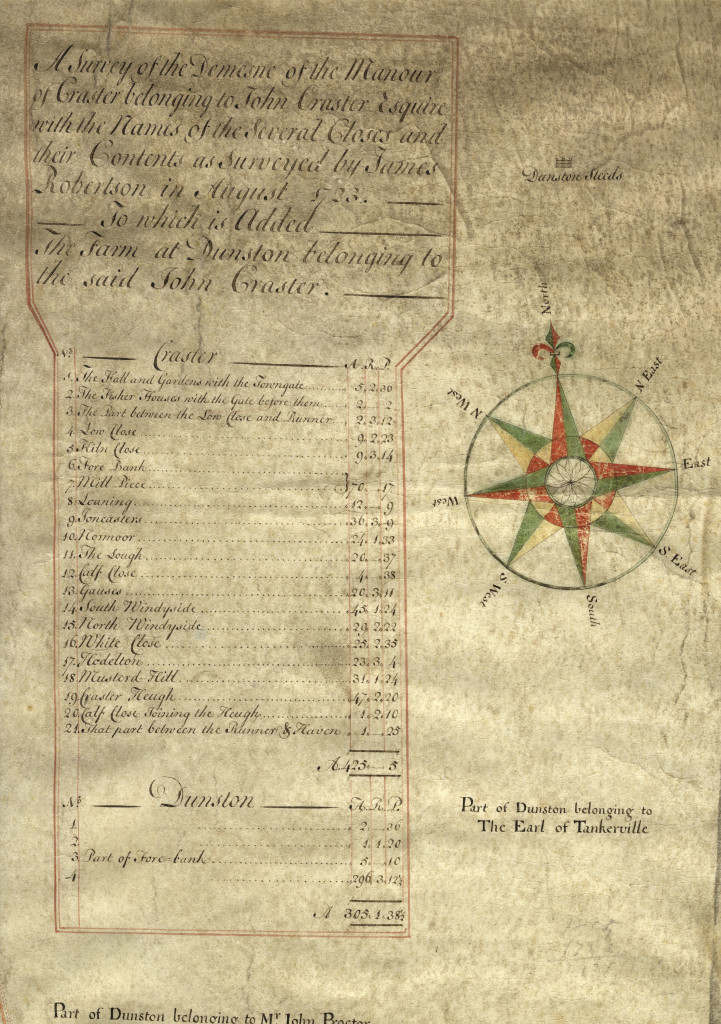
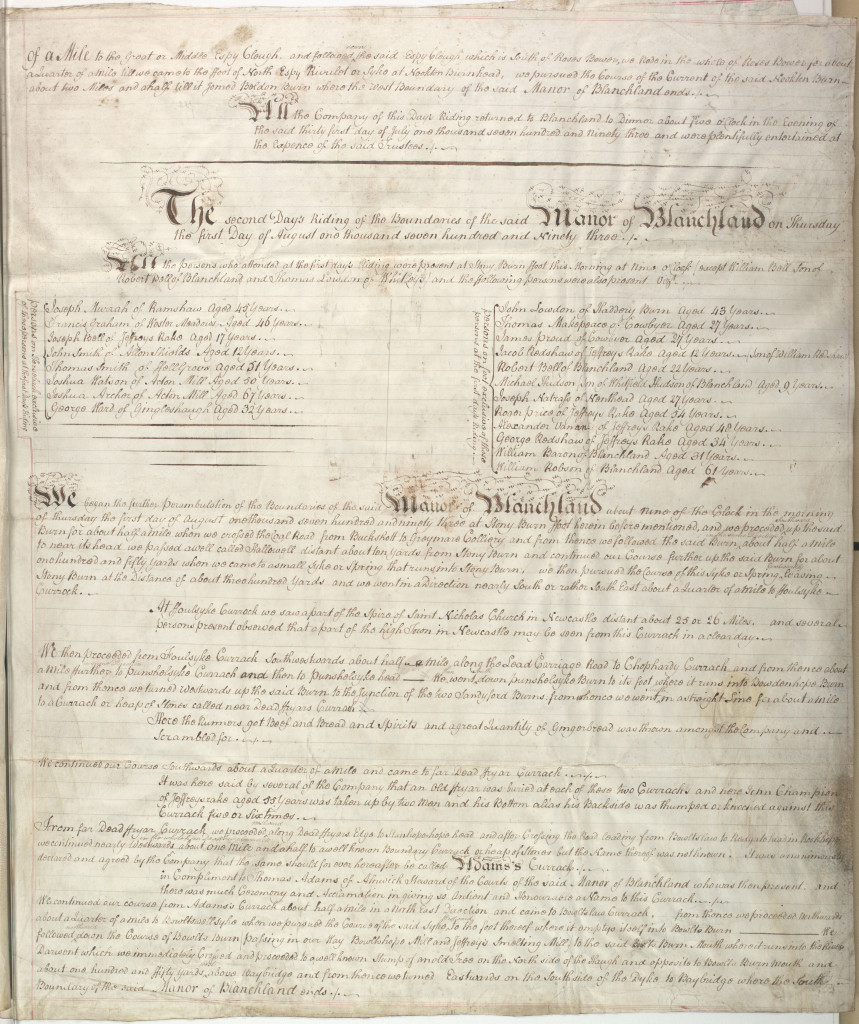 Boundary roll – Description of the manorial boundary, though not a full perambulation.
Boundary roll – Description of the manorial boundary, though not a full perambulation.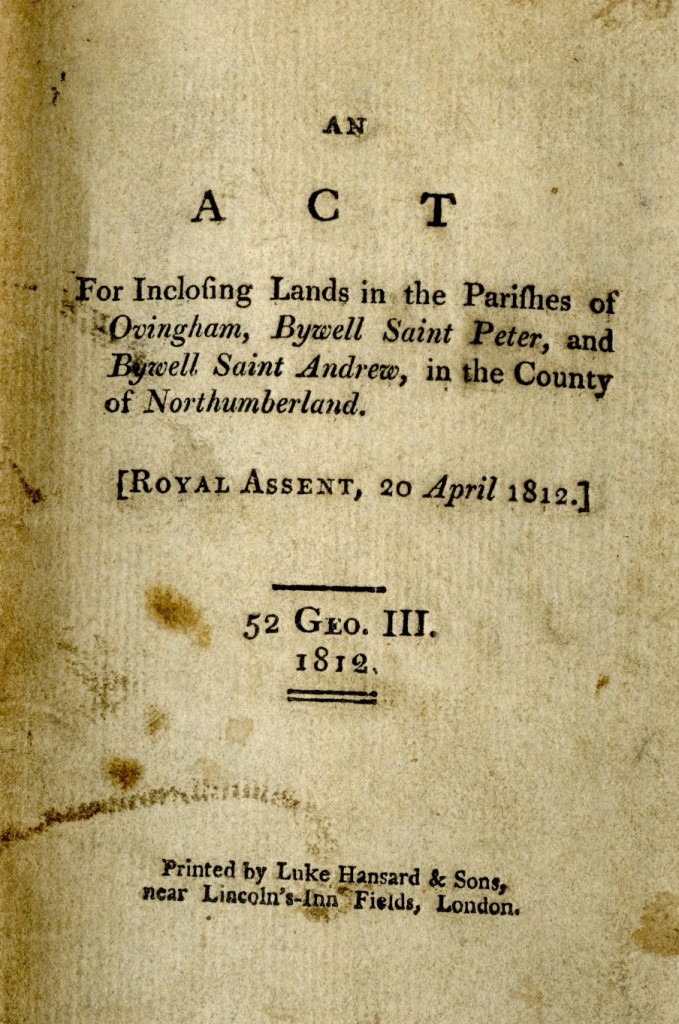
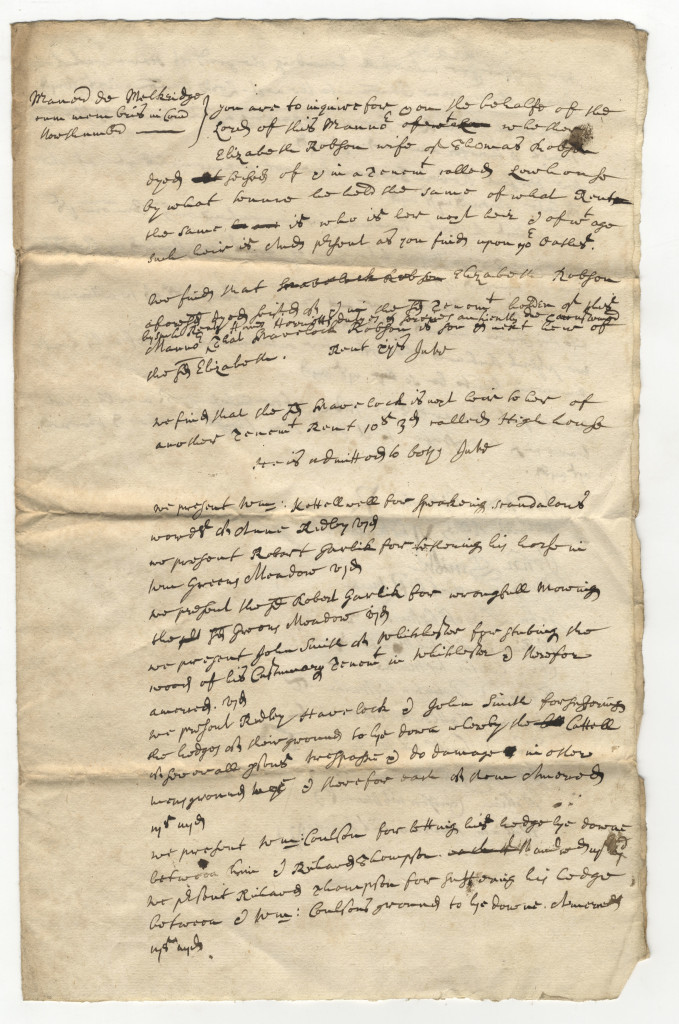 Presentments – lists of the matters to be dealt with by the court, such as disagreements between tenants or disobeying the manor customs, often drawn up beforehand by the jury. They might often be included in the court roll. ZBL 2/13/21 has some interesting examples including those brought before the court for offences such as ‘speaking scandalous words’ of someone or ‘wrongful mowing’ of someone else’s meadow.
Presentments – lists of the matters to be dealt with by the court, such as disagreements between tenants or disobeying the manor customs, often drawn up beforehand by the jury. They might often be included in the court roll. ZBL 2/13/21 has some interesting examples including those brought before the court for offences such as ‘speaking scandalous words’ of someone or ‘wrongful mowing’ of someone else’s meadow.